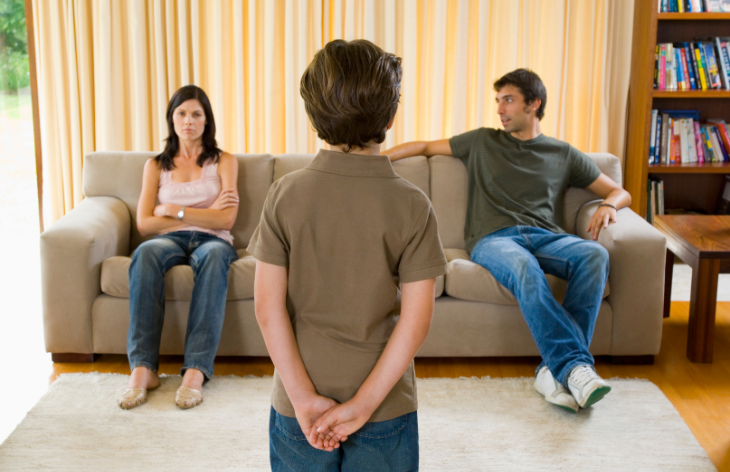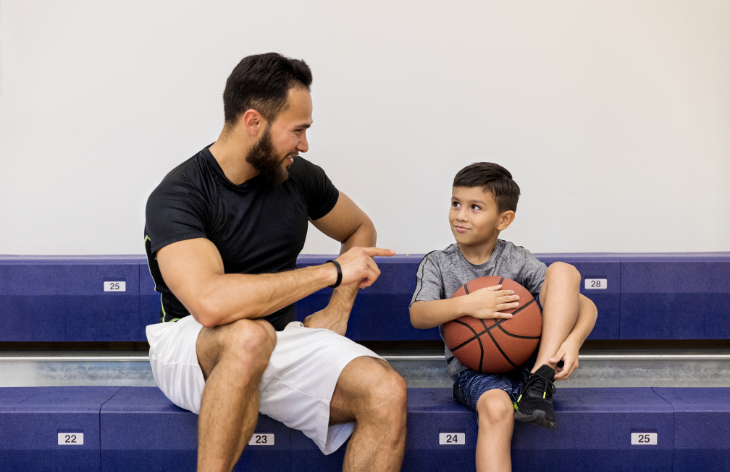When you notice your child sulking instead of speaking up or leaving their chores undone with a shrug, it might not be just stubbornness—you could be dealing with a passive-aggressive child.
This kind of conduct can confuse and frustrate you as a parent. It’s a silent outburst, a blend of resistance and compliance, almost like a tantrum without the yell, that can wreak havoc in your home if it’s not comprehended and handled correctly. What strategies can help you communicate better, and how do you support your child while establishing clear boundaries?
Key Takeaways
- Passive-aggressive behavior in children requires careful handling and understanding.
- To address such types of behavior, open and non-confrontational dialogue is crucial.
- Consistent support and engagement with your child’s environment can help you gain control over their aggressive behavior
Shannon’s Take
1. Understanding Passive-Aggressive Behavior in Children
When your child sulks after being told no, or agrees to do chores but consistently forgets, it’s not just stubborn behavior; they might be displaying passive-aggression. This can mask their feelings of anger and frustration without open confrontation.
Identifying Passive Aggression
Passive-aggressive behavior often manifests in patterns that you can learn to spot with careful observation. Look for non-verbal signals of aggression, like:
- Eye-rolling and subtle whining
- Being maliciously compliant
- Procrastination
- Subtle sabotage of tasks
- Intentional inefficiency
- Feigning forgetfulness.
If unchecked, this can become ingrained into their personality and will stick with them for life. Recognizing these signs is the first step to addressing the underlying issues.
Maureen Lezama, a mother of three and mental health writer agrees: “Experts believe that if passive-aggressive behavior persists beyond the age of 17, it will stay for life. Covert anger can damage your child’s future interpersonal relationships and career. Once you identify the signs, have a sense of urgency to correct the behavior so your child develops healthier ways of expressing anger.”
Common Causes and Triggers
This behavior often stems from a feeling of powerlessness or an inability to express their frustrations directly. This behavior may be rooted in environments where open expression of anger is discouraged or even punished.
Common triggers include feeling misunderstood, overloaded with tasks, feelings of helplessness, or an inconsistency in parental expectations.
Dr. Jane Nelson, a well-known psychologist, emphasizes that children express passive-aggressiveness when they feel discouraged. For more in-depth insights, you could visit her discussions on positive discipline strategies. Understanding the causes of passive-aggressive behavior is crucial for fostering a healthier emotional environment for your child.
2. Communication Strategies to Address Passive Aggressiveness

When your child displays passive-aggressive behavior, it’s crucial to engage with them using a clear, direct approach. Your objectives are twofold: to encourage honest conversations and to guide them in expressing themselves assertively.
Fostering Open Dialogues
Start by creating an environment where your child feels safe to talk openly. Make sure they understand that you’re ready to listen without judgment. When you let your child know that their thoughts and feelings are valid, you lay the groundwork for more meaningful exchanges.
Ask questions that lead to clarity about what they are feeling and why they might be acting out indirectly. Ensure your child understands your request for openness as an opportunity, not an accusation.
Teaching Assertive Expression
It’s important to help your child differentiate between aggressive, passive, and assertive communication. Model assertive behavior by using “I” statements and encouraging your child to express their feelings in the same way.
For instance, instead of saying, “You never listen,” try, “I feel ignored when you don’t look at me while I’m talking.”
This teaches your child to communicate their needs and frustrations without lashing out or resorting to passive-aggressive actions. By reinforcing these strategies, you promote their ability to handle conflicts directly and constructively.
3. Behavioral Management Techniques
When it comes to addressing passive-aggressive behavior, having a game plan is key. You’ll be setting yourself up for success by establishing clear expectations, enforcing logical consequences, and sticking to consistent follow-through.
Setting Clear Expectations

First things first, lay down the law in a way that’s crystal clear.
It’s like giving your kid a roadmap: you want them to know exactly where the boundaries are. For example, you might say, “Homework needs to be done by 7 PM,” so there’s no wiggle room for misunderstanding. Having time limits also helps kids understand what’s expected, and when.
Implementing Logical Consequences
If the rules get broken, there’s got to be a payoff and not the good kind.
Logical consequences are directly related to the misbehavior. Say your child dawdles off on chores; the consequence might be losing video game privileges for the day.
Consistent Follow-Through
Talk is cheap if you don’t walk the walk. Consistent follow-through shows your child that you mean business.
This could be as simple as enforcing a rule every single time, like no TV until the toys are picked up. Don’t cave in; when you’re consistent, your child will start to realize that bending the rules just doesn’t fly.
4. Coping Mechanisms and Support

When dealing with a passive-aggressive child, it’s crucial to address not only their immediate behaviors but also to foster resilience and emotional growth. Let’s explore practical ways you can nurture your child’s ability to handle anger positively and develop coping skills for challenging situations.
Empowering Your Child to Overcome Anger
First off, you need to empower your child. This means helping them recognize their emotions are valid, but the way they express them needs a positive outlet. Teach them to verbalize what they feel instead of acting out.
For example, if they feel ignored, encourage them to express that directly. The goal here is to guide them toward a mature response to anger, modeling and reinforcing the language and behavior that drives a healthy expression of deeper feelings.
By doing this, you’re not just addressing the surface-level symptoms; you’re helping your child navigate their emotions more effectively.
Teaching Coping Skills
Now, about teaching coping skills—start with problem-solving strategies. Let’s say your kid’s upset about a broken toy. Instead of sulking, guide them through these steps:
- Identify the problem: “My toy is broken.”
- Come up with solutions: Might be trying to fix it, asking for help, or finding another activity.
- Choose the best solution and act on it.
Through these steps, you’re equipping your child to manage their reactions to frustration and setbacks. It’s all about giving them the tools to handle complex feelings and turning those moments into opportunities for personal growth and emotional development.
5. Engaging with School and Building a Supportive Environment

You’ve got a passive-aggressive child and you’re wondering how school and home can help? It’s all about partnership and environment—working closely with teachers and crafting a home setting that minimizes passive resistance.
Partnering with Teachers

Let’s start with the school side. Team up with your child’s teachers. They’re on the front lines and can be your allies in spotting and managing passive-aggressive behavior.
Have a chat about consistent communication—maybe a weekly email or a quick call—to stay on the same page. Then delve into strategies that work both in the classroom and at home. For instance, if your child tends to passively resist homework, have turning it in be a part of their daily routine.
Creating a Home Environment that Discourages Passive-Aggressive Behavior
Now for home sweet home. It’s your turf, and you’ve got more control here. Start by setting clear expectations. If you say lights out at 9 PM, stick to it. Routine breeds familiarity, and familiarity can cut down on those covert eye rolls.
Next, watch how you model dealing with frustration. If you’re calm and collected, you’re showing your child how to express feelings directly, without that passive-aggressive edge.
Conclusion: Be Firm But Kind

It’s important to stand your ground and assert your needs but always do so with empathy and understanding. Being firm but kind allows you to maintain your sense of control and respect while also showing compassion and consideration for your child. This should help in addressing your child’s passive aggressive behavior.
Frequently Asked Questions
Tackling passive-aggressive children can be challenging. Here’s a rundown of common questions to help you navigate this complex issue effectively.
Are there certain triggers that can lead to passive-aggressive behaviors?
Yes, children may exhibit passive-aggressive behaviors when they feel powerless or unable to express their emotions directly. This can happen when they’re experiencing stress at school, feeling misunderstood, or not having their needs met. It’s crucial to identify these triggers to address the underlying issues.
What are some examples of passive-aggressive behaviors?
Examples include procrastination, deliberate inefficiency, and non-verbal cues like sulking or the silent treatment. These behaviors can also manifest as subtle acts of defiance, such as “forgetting” to complete tasks or being purposefully slow in response to requests.
How should I address my child’s tendency to become destructive when angry?
When your child becomes destructive, it’s important to remain calm and avoid punishment that could exacerbate the situation. Instead, provide a safe space for your child to express anger and teach them healthy ways to manage emotions, like using words to describe feelings or engaging in physical activity as an outlet.
Is there a way to deal with my child’s refusal to follow instructions without escalating the situation?
Certainly. Approach your child with empathy and clear communication. Validate their feelings and provide choices when possible. This helps them feel heard and can reduce the power struggle. Encourage cooperation by setting consistent and reasonable expectations and by explaining the rationale behind your requests.

